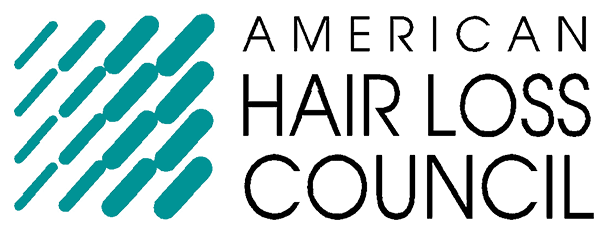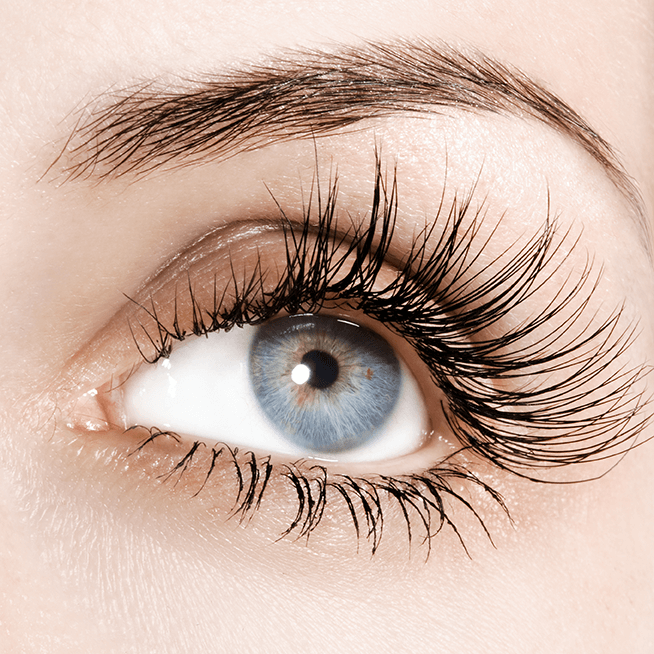LIVE on Instagram, HAIR RESTORATION
w/ Kathy Buccio (PBS The Health Channel & AllHealthGo) and Dr. Alan Bauman (Bauman Medical Hair Transplant & Hair Loss Treatment Center) chat about hair loss, hair transplants, hair regrowth treatments, and more!
Watch the Replay Now Available on IGTV!
Listen in on this awesome IGLIVE Hair Restoration discussion between @kathybuccio from @allhealthgo and #hairloss #hairtransplant expert @dralanbauman from #BaumanMedical as they talk about all things related to #hairgrowth and #hairrestoration on #IGlive! Watch the IGTV replay on Dr Bauman’s Instagram!
Dr. Bauman Answers these Frequently Asked Hair Restoration Questions:
What does a Hair Restoration Physician do?
What causes hair loss?
Does hair loss come from the mother’s or father’s side?
When should someone seek help from a hair loss specialist, a doctor who is a Hair Restoration Physician?
What does “Time is Follicles” mean?
What treatments should be considered before hair transplantation?
Why are #hairtransplants permanent?
How much shedding is normal?
What is #PRP platelet-rich plasma and how much hair growth do you get?
What is @PDOgro for hair growth?
What is the downtime from PRP or PDOgro?
How do you perform Exosome Therapy or stem cell therapy for hair growth?
What is VIP|FUE no-shave, long hair preview hair transplantation?
How are #eyelashtransplants performed and what are the results?
What happens if a patient has alopecia totalis or universals?
What is a 3D-Printed Cranial Prosthesis?
What is the price range of a hair transplant procedure?
How do I find a board-certified ABHRS hair restoration physician?
Does COVID, lockdowns, or vacc1nes cause shedding?
What can you do about hair shedding from stress, COVID, or vcc1nations?
What is better than Rogaine?
What do you recommend with PRP for hair growth?
Does LaserCap work for postmenopausal hair loss?
How does the Turbo LaserCap differ from typical consumer laser therapy devices for hair growth?
Where can someone request a virtual consultation for hair loss and hair restoration?
@allhealthgo | @kathybuccio | @dralanbauman | @baumanmedical
Kathy Buccio: Hello everyone, it’s Kathy Buccio host of the All Health Go Instagram Live, also the host of The Health Channel. We are joined today by a very special guest, we are talking to Dr. Alan Bauman, he is a hair transplant surgeon and Medical Director at Bauman Medical. We are gonna be talking about the different hair transplant procedures that Dr. Bauman performs as well as what is hair restoration and what causes hair loss as we wait for him to jump on our Instagram Live right now, I wanna share a little more information about Dr. Alan Bauman, who has seen over 30,000 patients who have had issues with hair loss and hair restoration, he has performed over 10,000 hair transplant procedures and over 8000 platelet-rich plasma, which is PRP, and he’ll explain a little bit about that now as he joins. I just saw him get on, so I am going to let him join this conversation. Dr. Bauman? Hello.
Dr. Alan Bauman: Hello, how are you?
KB: I am fine. Well, thank you so much for joining us today on this IGlive.
DB: Oh, it’s great to be here with you Kathy.
KB: Absolutely I did to tell our viewers a little bit about yourself, but in general, what is it that you do as a hair restoration physician?
DB: Well, what we do is we help people look good and feel great by maintaining, enhancing, and restoring their own living and growing hair.
KB: I love that. Okay, but let’s start with the basics ’cause I think a lot of people have the same question, What causes hair loss, and will I be that person that may experience hair loss?
DB: Yeah, well, there’s a lot of causes of hair loss that are out there, but probably the main one that we see these days is genetics, so if you choose your parents wisely, then you won’t have hair loss as they say, but hair loss can come from the mom’s side or the dad’s side, and that would be typical male and female pattern hair loss. That’s what we treat mostly at the practice here at Bauman Medical.
KB: Okay. And you said it, it’s genetic in the sense that it can come from… Is it mostly the mother or… ‘Cause I’ve heard both.
2:00
DB: Yeah, so it’s an old husband’s tale actually, that it comes from the mother’s father, it is linked in that way, but we know now that there are literally hundreds of genes and thousands of snips, which are all those little changes in the DNA that could predispose you to hair loss, and also predict your response to treatments, various treatments.
KB: And I wanna… Before we jump into those a little bit, I guess the big question is, when should someone seek that professional help to have a treatment?
2:39
DB: Yeah, that’s a great question, because a lot of times patients come to me and they already had a lot of hair loss, they’ve already maybe tried things on their own in the consumer realm, whether it be a “magic vitamin” or a special shampoo, and they’ve lost a little bit of time. And when it comes to hair loss, time is not on our side, we say “time is follicles,” a very close friend and colleague told me that, and what that means is that hair loss is typically genetic and other forms of hair loss are typically chronic and progressive, that means they get worse with time, without treatment, so early intervention is really the key, and so as soon as you start to notice some changes in your hair, now for men, it could be at the hairline or in the crown area for women, it could be your ponytail volume, or loss of coverage or volume, or even just excessive shedding in your sink or a shower drain. That’s the time to seek out some professional medical help, to get some advice on appropriate diagnosis, to look at your risk factors, to look at your genetics and your history, but also other things too that could be affecting those really important little tiny mini-organs on your scalp those hair follicles.
KB: I wanna talk about the hair follicles because I love that you mentioned that “time is follicles,” but once a follicle is dead, does that mean there’s no chance to have hair growth in the future in that follicle?
DB: Well, once a follicle is dead and gone or beyond repair, then that follicle can’t be rejuvenated and the only thing that’s gonna bring back hair in that particular zone of your scalp or wherever you have the hair loss is a hair transplant. And so that’s why we spend so much time with our patients, basically telling them how to preserve their existing hair, what can we do to help keep those follicles going, tracking along, as they say…
KB: Absolutely.
DB: To grow good healthy hair over time and resist the hair loss process.
KB: Okay, so let’s talk about some of the treatments and the difference between treatments before we get into a transplant. Can you talk a little bit about that?
DB: Yeah, well, even before we get to the treatment, as I said, the appropriate diagnosis is important because if you have auto-immune hair loss, that’s gonna be treated differently than genetic hair loss, and so you wanna get that accurate diagnosis first, but let’s say we’re talking about a common garden variety, male or female pattern hair loss. We’re gonna do some measurements, we’re gonna do a baseline analysis, we’ll measure your density, hair caliber, we’ve got some very cool new computerized microscopes that are basically running with artificial intelligence to be able to assess exactly how much hair you have in each zone, so that’s part of the initial evaluation, maybe we do a genetic test, if we’re not sure the cause of hair loss, you might have a biopsy, there are certain things that… Other things that we might do to diagnose the problem, like blood work and biomarkers and things like that, but let’s say we have a diagnosis of hereditary hair loss, what are we gonna do first?
DB: Yeah, so we’re gonna look at your risk factors, what are your lifestyle and habits, so could there be some social factors, are you stressed out, are you not eating properly, is your nutrition not on point, are you not sleeping well? These are all important factors, ’cause a hair follicle is a very, very strong barometer of your health, and if we can reduce risk factors, then we can move into some therapeutic interventions, so we can look at a variety of different categories, and so a lot of people are familiar with some of the FDA-approved medications for male and female pattern hair loss, there are topical medications and oral medications, and just in general, there’s some other things that we can do as well, not just nutritional supplementation and appropriate hair care to make sure that your scalp health and hygiene is on point.
DB: But also low-level laser light therapy, red light therapy is very good for hair loss and hair regrowth, and regenerative medicine has been one of the exciting expanding modalities that we have in our toolbox, things like PRP, platelet-rich plasma, other regenerative technologies like PDOgro and exosomes and stem cell therapy are all coming of age right now. So those are some of the things that we would engage in first before we get to something more dramatic. Like a hair transplant procedure.
KB: Absolutely, and I wanna talk about the procedures, but I guess beforehand, I’m gonna go back because it’s very normal for us to shed hair, correct?
DB: Absolutely. Absolutely.
KB: But what is normal?
DB: Yeah. What’s normal is different for everyone, because let’s talk about why hair follicles shed the hair, so every single hair follicle on your scalp is gonna go through a growing phase, and usually that would last about five to seven years, that’s while the follicle is producing the hair fiber, so the hair fiber that we see, and then the follicle will then shut down and will take a rest, essentially a little break, a little vacation, if you will, it degenerates in the scalp, it’s still there, still alive, but it’s turned off, and so it rests and then it will turn, and that’s about 90 days where it degenerates, rests and then turns on again, and then the follicle will start to produce a hair again in a new cycle, so in between that resting and growing phase, every time a hair follicle cycles normally you get a hair shed, so the hair follicle will shed the hair and you will see the hair shedding out of the scalp, it will basically come out in the brush or in the shower, and when that happens, it could be concerning ’cause you don’t realize that that’s a normal shed. So for the average everyday person, about 100 to 200 hairs shed per day is normal.
KB: Wow. Okay.
DB: But here’s the thing, if you wear a big ponytail or maybe you don’t wash your hair, or you have very curly hair, for example, a lot of those shed hairs stick around up on your scalp for a while.
KB: So that’s why it seems like you may have a lot.
8:49
DB: Right. So let’s say you take your ponytail out after a couple of days or a man bun for our men, and all of a sudden you see all this hair come out when you do the shampoo. Well, that 200 hairs per day, if you’ve waited two days or three days, it turns into 400, 600 hairs in the shower drain. And that can be kind of scary. But as I said, normal.
KB: Absolutely. Okay, I love that you gave us a little bit of this feedback because I wanna start talking about some of the procedures because you have actually completed thousands of these. Let’s start with the PRP. How do you implement that?
9:04
DB: So many people are familiar with cell therapy in the realm of orthopedics, maybe their famous or popular professional athletes have gotten a stem cell type therapy in their knee or joint or elbow, shoulder, what have you, for wound healing or for regeneration of those areas through… If they’ve been injured, well, many people are familiar with like the vampire facelift, that Kim Kardashian kind of promoted years ago, and what that is, is the use of blood platelets, the platelets that we get literally right from your own blood, which contain very powerful growth factors. We separate them and concentrate them in a very special way for the scalp, so this is not the typical vampire procedure that you would do for wrinkle reduction, this is to activate the hair follicles, very specific. And so under local anesthetic, this occurs painless-ly in my office, it takes about an hour or maybe an hour and a half at the most. Door-to-door, it’s under a local anesthetic.
DB: As I said, we take that small blood sample, prepare the PRP in a very special way, and then it’s injected into the scalp in the areas of concern. And there’s no recovery or downtime, that procedure, once it’s completed, your scalp will be a little bit numb, maybe it will feel a little bit tingly as the medication wears off, it might look a little bit pink from the work that we do, and there’s a couple of different nuanced steps that we have developed over the past 15 years that we’ve been performing PRP, so for example, it includes micro-needling, it includes some growth factors that we add in to topically in the scalp as well as the injectable part of it.
DB: There are some other, what we call extra-cellular matrix, which can be biologic or synthetic that’s included with the PRP under the skin, and that makes the process… The results of the process last for about a year or so with a single treatment, so no longer do you have to do this again and again and again, every month or two months, you can just have a single procedure each year to boost the functioning of the follicles.
KB: And how much hair growth would you get from a PRP treatment?
DB: Well, this varies because each area of your scalp may have a different amount of hair follicles, the density might be different, so an area with a high density with good quality hair, maybe it just maintains that location, the area that you might see the biggest response is the area that has a high number of weak hairs so that we determine obviously under the microscope, areas that are dead and gone in both men and women, for example, if they have a receding hairline, those areas don’t typically respond as well in terms of re-growth because the density could be very low in that zone before we get started, but if there’s a lot of existing hair, then you’ve got a great chance of boosting up that hair.
11:53
KB: That’s fantastic news. And you mentioned something called the PDOgro procedure. Well, I’m intrigued. What is that?
DB: Yeah. So this is kind of like PRP 2.0, if you will. Some people have learned about PDO, PDO stands for polydioxanone which is a synthetic material, and it’s used in cosmetic medicine for wrinkle reduction, it’s the placement of these little tiny threads, it could be used, for example, by cosmetic physicians for wrinkles in the brow or to actually lift the face in many ways with mixed results, you have to go to a professional for that, but what we learned is that the use of this absorbable substance in the scalp can enhance the results from PRP.
KB: Oh, so you do it in conjunction with the PRP?
DB: Correct. So a PDOgro procedure is something we’ve done over almost six years now. We were the first to do it here in the United States. I can’t tell you that I invented it, but we helped pioneer it, moving it forward from many of my colleagues in cosmetic medicine in the Far East in India, and in Korea and things like that, where they do a lot of these threads, and what we learned initially is that even just the threads alone in the scalp could boost the hair growth and that when we combine that with our traditional PRP treatment, wow, we got a much stronger and longer working result from that PRP treatment.
KB: Now explain, explain the threads and you place them in specific areas, how many threads are included.
DB: Yeah, so these threads are first of all, very, very tiny, and for your listeners, they’re painless-ly embedded, so you don’t feel them or see them during the procedure, obviously, but they’re loaded on an instrument that’s kind of sharp and about the length of my finger, it looks kind of like a needle, and then when they go in under the skin, the needle’s then removed and the thread stays there under the skin, so in different areas of the scalp, we may put them in a radial format, so kind of like a Sunburst, let’s say in a crown, as we go forward towards the front of the scalp, they may be in parallel next to each other, and then as we get around the hairline, we’re gonna apply them into the hairline zone according to wherever you have some hair.
KB: That’s incredible.
DB: Yeah, so you don’t feel them, you don’t see them, it takes a few minutes to apply them, but they have to be applied very carefully because you don’t wanna damage any of the existing hair, they have to go in the correct depth, not too shallow, not too deep. And you wanna make sure that they’re embedded properly so they don’t cause any inflammation or other ill effects on the scalp, so there’s some nuance to the technique that I’ve developed, and of course, it’s performed immediately after the PRP injection while the scalp is still numb and essentially right after the procedure is completed, we shampoo the hair and you’re off and running.
KB: So there really is no downtime for the PDOgro as well.
DB: Not at all. No, you’re again, your scalp will be a little bit pink, a little bit numb for a few hours, but nothing to hinder you from doing your regular scalp hygiene or shampooing, you can go and work out at the gym, you can run around town, it’s no problem.
KB: Okay, great. Now, who’s a candidate? Is this… And when we talk to genetic hair loss, these are the patients that are candidates for the PDOgro as well?
DB: Absolutely. So just like PRP or other non-invasive treatments, topical lasers, nutritional things like that, you have to have a hair follicle there for it to work, and you can combine it with a hair transplant, but many of our patients will come in and use PDOgro as a stand-alone treatment.
15:33
KB: Okay, now at what point do you talk about the no-shave hair transplant. So please correct me, Dr. Bauman, if I’m saying this correctly. It’s the VIP FUE.
DB: VIP FUE. So many of your followers and listeners may be familiar with FUE-style transplantation, this is a procedure that requires no linear harvest of the scalp or “strip-harvest” like years and years ago, well we were all trained that way, 25 years ago to take the follicles with a strip and stitches and staples, and even our early procedures were done that way, but over the past 15 years, the technology has progressed, there are new, smaller mechanical, even robotic instruments to help us take as little as a single hair follicle one at a time. So that’s how we typically will do our procedures, that’s how I’ve done all of our procedures over the past 15 years, we do not take a strip harvest anymore, and it’s a very effective procedure, but in the years past, what we’ve had to do in order to do that harvesting, we typically have to trim or shave a small area of scalp, so for women that could be a little small stealth area hidden by their existing hair or gentleman with longer hair, and for men who didn’t mind or wanted a larger procedure that may be a wider shave around the sides and the back to get access, however, in order to do this procedure with no visibility whatsoever, we’ve now developed this technique called VIP FUE, and this is exactly what you said, a no-shave, long hair.
DB: Preview hair transplant. And so… That’s a big long sentence. What does that mean? It means that we can now take the follicles without trimming the hair.
KB: Without that shave, okay.
DB: So literally… Yeah, there’s no shaved or trimmed zone, the follicle literally comes out of the scalp with the long hair attached to it.
KB: Wow. Okay, and what are the results of this procedure?
DB: So the results are amazing. First of all, what’s very cool, well, it requires a little bit of extra time, effort and energy, and special instruments to perform, but when we implant those follicles, you can actually see what the result is gonna look like immediately after the procedure, which is not the typical case with a traditional transplant, normally what you would see is just the little crusts from the grafting, but here you can see the hair, which helps hide the crusts a little bit, and it shows you really what it’s gonna look like, but remember that that’s temporary. Remember, I told you that hair follicles turn off and then turn on again, when you transplant a hair, the follicle is active for a short period of time, and then it turns off, so that preview only lasts a little bit, and then of course, it will regrow months later. And regrows permanently and forever.
KB: And so our patients okay with this as well, knowing that… Wow, I see hair. Like you said, the follicles die, they are… Not die, but they are…
DB: They turn off.
KB: They hibernate… They hibernate as we like to say, and then they come back on, but that’s where we see the permanent growth.
DB: Exactly. So, patients are super psyched about this because most patients wanna keep their transplant 100% discreet, and this is the most effective way to do that than we know of. There’s really no other way to take the follicles with the long hair attached.
KB: That’s incredible.
DB: And this also allows us to do some nuanced procedures, for example, eyelash transplantation, without having to harvest a strip anymore.
19:00
KB: How is that done with the eyelashes?
DB: Yeah. Well, it’s done very carefully. [chuckle] Yeah. Yeah, very carefully, very gently. But what happens with eyelash transplantation is that long hair becomes a kind of like the thread which gets passed in under the skin and out through the lash line with obviously a sharp instrument, and the follicle gets lodged underneath the lid and is growing out of the lash line. So, when we literally implant that follicle into the eyelid, we do it maybe a… It could be dozens, if not 100, per eyelid, we now use that long hair to be able to thread that lash into position, to thread that follicle into position at the lash line.
KB: That is mind-blowing to me.
DB: Yeah.
KB: Wow. Okay, so I’m thinking about patients who unfortunately have conditions where they have this hair loss permanently. Would they be candidates for something… I apologize, my dog is barking.
DB: No. No worries.
KB: Never barks, but decides to bark right now.
DB: No, no problem.
19:49
KB: So patients who, let’s say, who was born without hair or someone who has alopecia, let’s say, would they be candidates for this kind of loss?
DB: So, if you have alopecia that’s scarring or autoimmune Alopecia like Totalis or Universalis, where you lose all of the hair across the top of your head, or gosh, in some cases, across your body, there’s no hair to transplant, and the active condition, which is that autoimmune problem, is happening at the skin level. So even if there was hair to transplant, it would not grow, would not survive. So in those particular cases, we use a medical-grade cranial prosthetic, which is essentially a medical wig that is used to cover the area with human hair. It’s made with a 3D printed material, which is super cool technology, that fits exactly to the patient’s own scalp. And the hair is just gorgeous, it’s like Hollywood hair. So, even if patients have extensive hair loss, extensive baldness, we can give them a complete restoration without surgery, if need be.
21:00
KB: That’s wonderful news. Let’s talk price, because obviously this is a very big investment, and I think, as you mentioned, there is so much attachment to our hair, and patients do wanna know that these procedures are going to work, especially in the long run. So what does an average procedure cost, Dr. Bauman?
DB: Yes. So, on the top end, if you’re looking at a large heroic-type hair transplant procedure, these procedures could range anywhere from $20,000 to $40,000, but remember that these procedures are permanent. Now, smaller sessions might be less expensive, but those are permanent, as I said, so you do get that living and growing hair forever. But remember, it’s not necessarily the cost, but what’s the value. And in today’s society, where our appearance, whether it’d be on Instagram Live or on Zoom, or self-confidence when we look in the mirror, we present ourselves to others is really, really important, and our hair plays an important role for nearly 100 million Americans out there who are struggling with hair loss. But obviously, before you get to transplant procedures, it’s important to start with a diagnosis, get a consultation from a board-certified hair restoration physician, someone who specializes in this process, because your average run-of-the-mill dermatologist or primary doctor, or your friends and family, even your barber or hairstylist, may not have the answers for you. And certainly, even Dr. Google can lead you astray in some ways and shapes and forms, so you have to be very careful out there if you’ve got hair loss and what you’re gonna do about it.
KB: Absolutely. That board-certified is important.
[chuckle]
DB: Yeah. Look, there are only about 200 of us. American Board of Hair Restoration Surgery has only certified about 200 physicians worldwide. There’s about half of us here in the United States and the rest are around the world, but we do virtual consultations for patients all over the globe. And before you invest in a hair transplant procedure that may seem to be like a bargain, remember that that least expensive or cheap hair transplant may be the most expensive mistake of your life, so get the accurate diagnosis first, get a second opinion. And even if you’ve had procedures in the past and think you might not have any available hair, there are some really cool things that we can do now with beard harvesting, body hair harvesting for men to move hair follicles around even if they feel like they’re tapped out in their previously transplanted zones.
KB: Dr. Bauman, I wanna ask you, because I know, obviously with COVID, one of the symptoms that can happen afterward, I know it happened to someone I know, was shedding.
DB: Oh, yes.
KB: And that to me was incredible to see the actual shedding of the hair and these almost clumps. So what happens then? Have you seen patients that have experienced this kind of shedding and their hair pattern has changed?
23:53
DB: Absolutely. This has been a top news item in the practice here since the beginning of the pandemic, as soon as the infection started to come in. Look, it was no surprise to those of us who are here in the field of hair loss, because way back in the literature around the 1900s, with the Spanish flu, they noticed that after the fever, about six weeks later, there was a significant shedding that occurred. Now, they didn’t really know why. Today we think it has a lot to do with the cytokine storm that occurs when you’re infected with COVID. And it could also be from just the stress of the lockdowns also, and today also the vaccines which create an immune response can also trigger a significant shedding. I’ve seen patients who have had severe hair loss accelerated by the vaccine in the practice, and it’s very concerning for those who weren’t expecting it. And what happens is that the follicle… Remember we say the follicle shuts down, it could be impacted by this inflammatory response if the fever is happening during COVID or the cytokine storm. Even if you don’t have a fever, a lot of patients notice a lot more shedding in those few… In that first month or so after COVID infection, even if it was mild.
KB: Wow. Okay. I… Go ahead.
DB: Yeah. I was gonna say, what we do about it is we try to track it, make sure we have the correct diagnosis and we have all the other factors, we wanna make sure even… There are lots of things we can do, for example, PRP, and laser light therapy, even topical medications, prescription medications can help. So there’s a lot of things to stop that telogen effluvium, which basically means the synchronized shedding that can occur with fever or the flu. It can happen also after childbirth and with hormonal changes and things like that.
KB: I have two viewer questions, and as I get them, I do want to ask you, how effective are these over-the-counter hair treatment boxes that we often see that promote hair growth? Are they effective?
DB: So, the over-the-counter treatments, like what we would consider Minoxidil, right, Minoxidil or the old Rogaine… Rogaine was the first FDA-approved drug for male pattern hair loss and then again for female pattern hair loss. Minoxidil is an effective treatment, but the main problem with what we see with the over-the-counter Rogaine versions or generic versions is that they’re very weak, they don’t penetrate very well. And the compound itself, the way that it’s mixed in the vehicle, is very greasy and gooey and kinda gets in the way of good adherence to the program, which would essentially be twice a day every day. So, if you’re not using the Minoxidil on your scalp twice a day every day, you’re not gonna get such great results.
26:50
S12: So what do we do about this? Patients who have been on Rogaine or have had trouble with generic Minoxidil over-the-counter, or even from these cloud pharmacies now, like HIMS, and Keeps, and Roman, and the many others now popping up all over the place, it’s still generic, typically. We switch them over to a custom-compounded Minoxidil. Many patients will find good success with a compound called 82M, which contains Minoxidil, also a mild anti-inflammatory, and tretinoin, and all of these things work together in a non-greasy, non-gooey base, essentially, so that you can be more adherent to the regimen, but also be more powerful at the level of the scalp because it’s penetrating better, it’s waking up those follicles more aggressively.
KB: Thank you for that. Okay, let’s go with the question. What topical do you recommend for women and to use in conjunction with PRP?
DB: So, just carrying on our conversation from a moment ago, that would be Formula 82M is probably our most popular product for women. Once we get past the years of childbearing age, we can be a little bit more aggressive with some custom-compounded pharmaceuticals that address potentially androgen sensitivity. And so those are treatments that are gonna be used off-label, of course, in postmenopausal women. You definitely wanna have a discussion with your board-certified hair restoration physician about that if you wanna be on something more than just a topical Minoxidil compound. Yeah. With the PRP, you would use maybe at home the Formula 82M. You could also use red light therapy. We have an amazing powerful TURBO LaserCap now, which is portable, rechargeable, hands-free, a very, very large dose of safe non-chemical, no-side-effect laser light therapy, and it really, really works for patients who are struggling with the hair-thinning process.
28:20
KB: Well, I love that ’cause that’s actually my next question, which is, do laser caps work for female pattern hair loss and perimenopausal stages?
DB: Yeah. Again, we always say, get that diagnosis correct first, get your measurements first, and be careful out there because this is not… Lasers are not new for hair regrowth. They’ve been out for literally 20 years, and so in the consumer realm, you’re gonna have some more clunky and weaker-powered devices than if you go to a physician-recommended device like the TURBO LaserCap. It’s gonna have a lot more diodes, you’re gonna be sure that they’re actually lasers as opposed to other light sources, which sometimes these consumer devices kind of fool you a little bit into thinking that they have a lot of light sources when they really don’t have any lasers. And those other consumer devices are gonna be a little bit more clunky. So, yes, laser therapy is a great treatment option for female pattern hair loss. But again, start with that diagnosis, start with the measurements so you know how well it’s working, because it takes… It could take a year for you to realize the improvements. And so in order to shorten that timeline to know what’s going on, you need to have those repeat measurements either in the office or with someone who has a tool to track your progress over time, so you know what’s working and where.
KB: Absolutely. Dr. Bauman, thank you. It’s been an exceptional conversation. Oh, my gosh, so much wonderful information. Again, anyone watching or those that will watch after, ’cause that’s usually where we get our most viewership, if you are looking for a consultation, reach out to Dr. Bauman. Again, please rewatch this, what a great conversation. Thank you for your time for being on the Health Channel with us, Doctor.
DB: Oh, it’s my pleasure. And any questions we didn’t get to today, I’m sorry, but you can always DM me a question or ask a question through the website, at baumanmedical.com.
KB: Amazing. Thank you so much, have a wonderful weekend.
DB: Alright, Kathy, great to be with you. You too.
KB: You too.
If you or someone you know has hair loss, hair thinning, baldness, or eyebrow / eyelash concerns, click to start either a long-distance virtual consultation OR an in-person, in-office consultation with Dr. Bauman. You can also Ask Dr. Bauman a Question or simply call Bauman Medical Group at +1-
*Each individual's treatment and/or results may vary



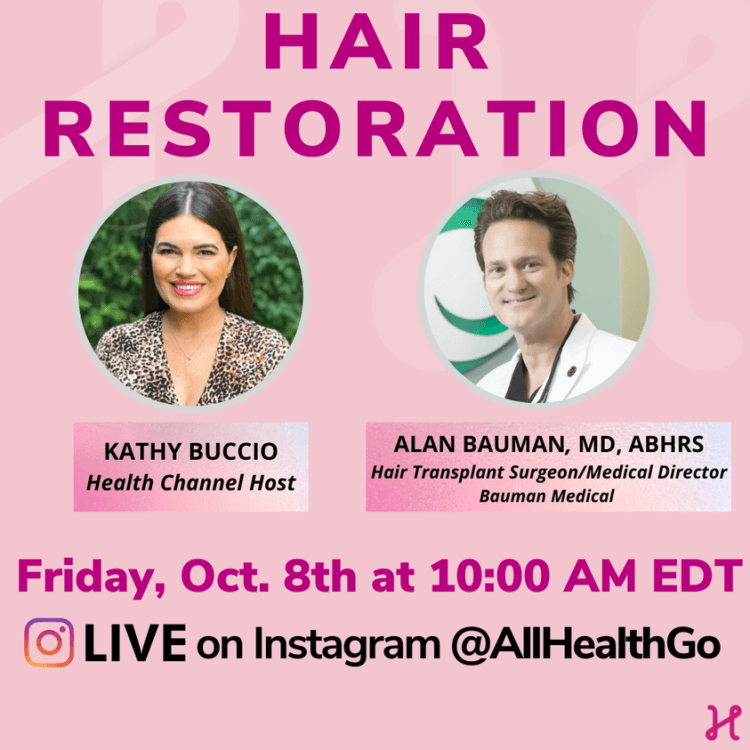

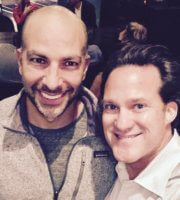 PODCAST: Hair Restoration Hair Transplant Interview with Alan Bauman MD by Peter Attia MD
PODCAST: Hair Restoration Hair Transplant Interview with Alan Bauman MD by Peter Attia MD PODCAST: Effective #Biohacking Hair Loss Treatments for Baldness
PODCAST: Effective #Biohacking Hair Loss Treatments for Baldness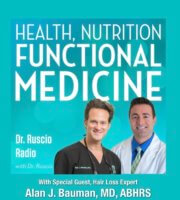 PODCAST: Functional Medicine Approach to Hair Loss & Hair Restoration in Women w. Dr. Ruscio
PODCAST: Functional Medicine Approach to Hair Loss & Hair Restoration in Women w. Dr. Ruscio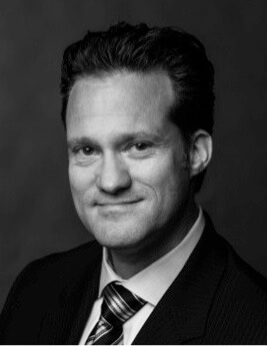 Dr. Alan J. Bauman, M.D.Hair Loss & Hair Transplant ExpertBoca Raton, FL
Dr. Alan J. Bauman, M.D.Hair Loss & Hair Transplant ExpertBoca Raton, FL